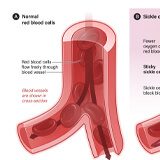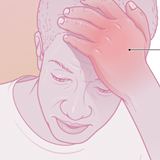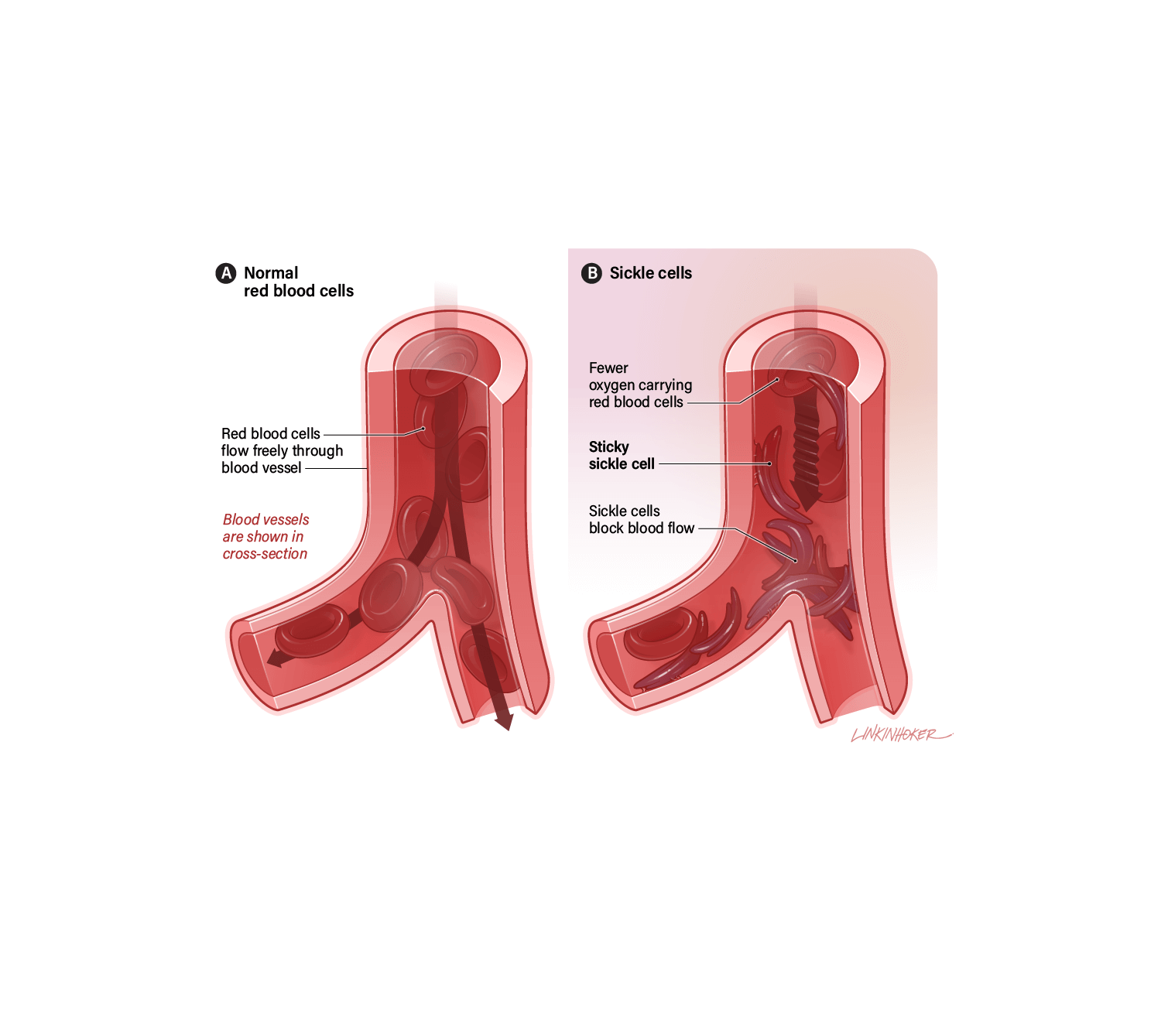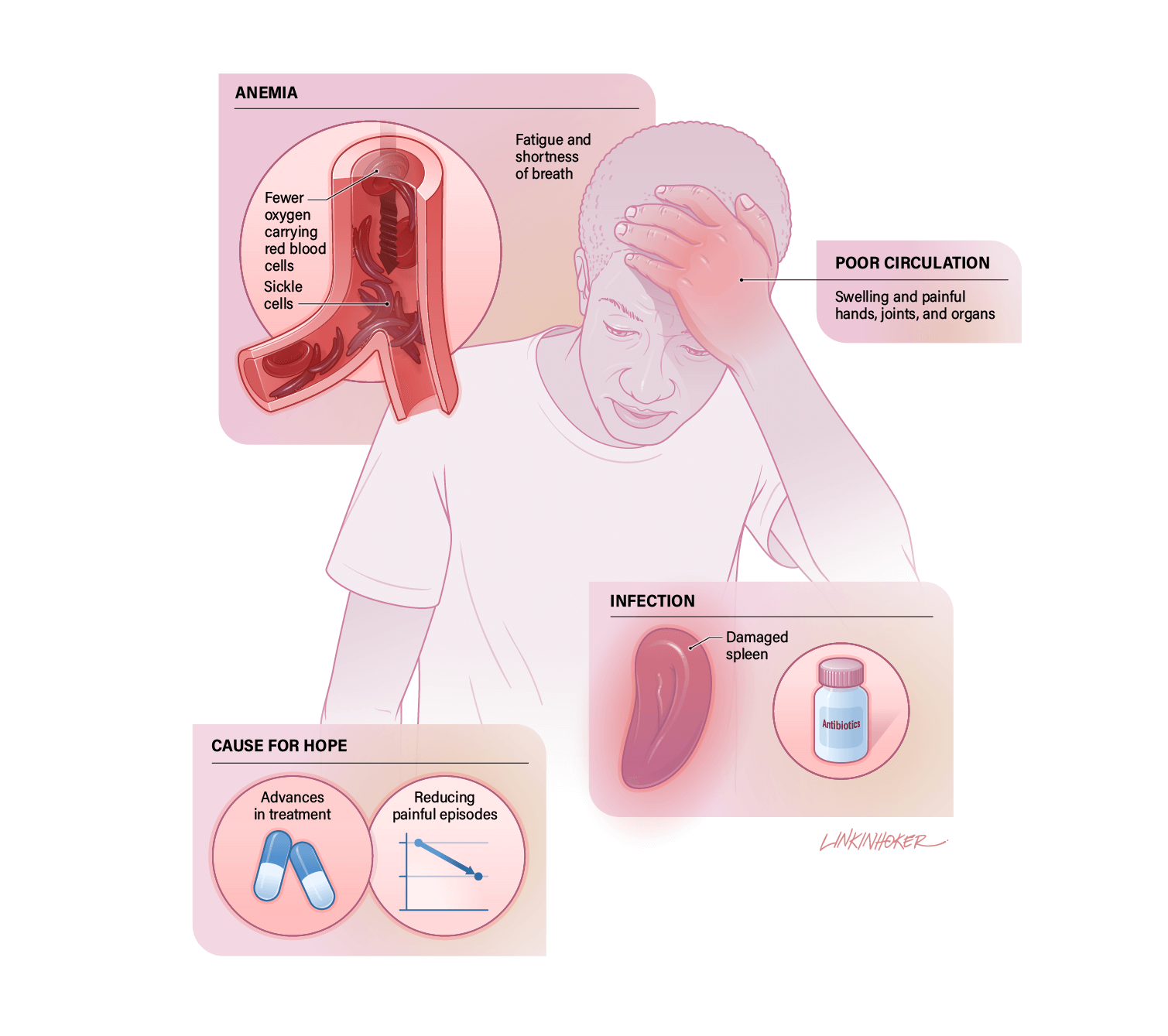Overview
Red blood cells are designed to pick up oxygen in the lungs and transport it throughout the body via the circulatory system. Their donut-like shape and water-balloon-like flexibility allows them to pass through even the tiniest blood vessels.
Sickle cell anemia is a hereditary condition that causes some red blood cells to distort into rigid crescent moon shapes and take on a consistency like cream cheese when oxygen is released. The affected cells can clog up blood vessels preventing adequate blood flow. Sickled cells also have a shorter life span than their healthy counterparts. Fewer red blood cells means less oxygen is delivered to organs and tissues in the body. Some individuals with sickle cell anemia experience only mild symptoms, but others can suffer severe consequences.
Normal red blood cells can flow freely through blood vessels. Sickled cells get stuck in the blood vessels and cause blockages.
View red blood cells and multiple sickle cells at https://medlineplus.gov/ency/imagepages/1223.htm.
Symptoms and Treatments
Anemia
Because individuals with sickle cell anemia do not have enough oxygen-carrying red blood cells, their bodies do not get an adequate oxygen supply. They can become easily fatigued and experience shortness of breath. Often their skin and fingernails are pale. Taking folic acid can help the body to produce more red blood cells, but anemia is often a chronic part of living with sickle cell anemia. In extreme cases, patients are given blood transfusions.
Poor Circulation
Because individuals with sickle cell anemia do not have enough oxygen-carrying red blood cells, their bodies do not get an adequate oxygen supply. They can become easily fatigued and experience shortness of breath. Often their skin and fingernails are pale. Taking folic acid can help the body to produce more red blood cells, but anemia is often a chronic part of living with sickle cell anemia. In extreme cases, patients are given blood transfusions.
Infection
Individuals suffering from sickle cell anemia are more vulnerable to infection because over time, their spleens become damaged from the lack of oxygen and nutrients. The spleen usually works to destroy the bacteria that can cause infections. If the spleen is damaged, it is no longer able to perform this task. Children with sickle cell anemia are often given penicillin on a regular basis to help prevent infection.
Cause for Hope
Although there is currently no cure for sickle cell anemia, there have been encouraging advances in treatment. Hydroxyurea is the first drug that the Food and Drug Administration has approved for the treatment of sickle cell anemia and provides dramatic results. When administered over time, it halves the number of painful episodes experienced by patients. Hydroxyurea also prolongs the lives of the sickest patients. Researchers are planning studies to see how hydroxyurea can help treat children.
Learn more at: https://medlineplus.gov/sicklecelldisease.html.
Find resources for sickle cell anemia at: vsearch.nlm.nih.gov/vivisimo/cgi-bin/query-meta?v%3Aproject=medlineplus&v%3Asources=medlineplus-bundle&query=sickle+cell+anemia+-+resources.
A Hereditary Condition
Gene Mutation
Sickle cell anemia is an inherited disease caused by a mutation in the gene that tells the body how to make hemoglobin, the molecule within red blood cells that collects oxygen. Each person has two genes that give hemoglobin instructions—one from each parent. If individuals have one gene that produces normal hemoglobin and one gene that produces abnormal sickle cell hemoglobin, they have sickle cell trait. They will not suffer from the disease but may pass on the abnormal gene to their children. If individuals have two genes that produce the abnormal hemoglobin, they will have sickle cell anemia.
Learn more at: https://medlineplus.gov/genetics/condition/sickle-cell-disease/#causes
A Doctor Making a Difference
Dr. Marilyn Hughes Gaston first encountered sickle cell anemia while interning at Philadelphia General Hospital. A baby with a badly swollen hand was admitted to her care. Dr. Gaston was unable to find the cause until her supervising resident suggested sickle cell anemia. The baby tested positive for the disease. His hand was swollen with a serious infection caused by lack of blood flow to the area. Dr. Gaston decided to focus on sickle cell disease. In 1986 she concluded a groundbreaking study proving that providing long-term penicillin treatment to children with sickle cell anemia helped to prevent infections.
Learn more about Dr. Marilyn Hughes Gaston.








